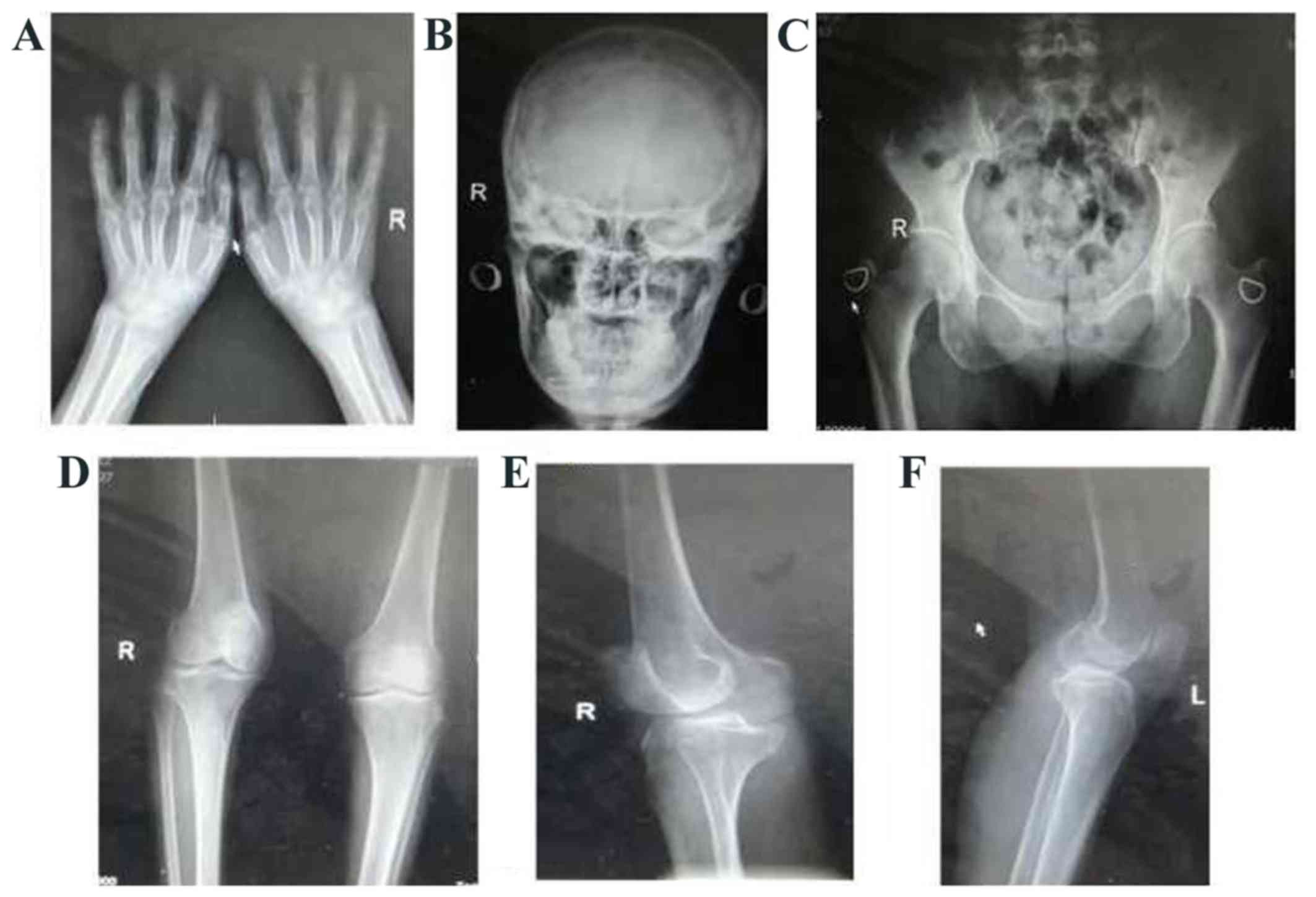Persistent arthralgia, vomiting and hypercalcemia as the initial manifestations of hyperthyroidism: A case report
- Authors:
- Published online on: January 10, 2017 https://doi.org/10.3892/mco.2017.1127
- Pages: 258-260
Metrics: Total
Views: 0 (Spandidos Publications: | PMC Statistics: )
Total PDF Downloads: 0 (Spandidos Publications: | PMC Statistics: )
Abstract
A 53-year-old woman presented with persistent edema and pain of the metacarpophalangeal and proximal interphalangeal joints and the wrist, knee and ankle joints, with more recent intermittent nausea and vomiting. Treatment for rheumatoid arthritis and osteoarthritis was ineffective. No clinical manifestations typical of hyperthyroidism were observed. The results of the thyroid function tests were as follows: Thyroid‑stimulating hormone, 0.003 µIU/ml; triiodothyronine (T3), 4.44 ng/ml;, thyroxine (T4) >30 µg/dl; free T3, 14.03 pg/ml; and free T4, 8.84 ng/dl. The laboratory tests revealed an elevated serum calcium level (2.96 mmol/l); moderate hypophosphatemia (0.84 mmol/l); significantly reduced serum intact parathyroid hormone (4.8 pg/ml); normal 25-hydroxy vitamin D (52.13 nmol/l) and bone-specific alkaline phosphatase (22.1 ng/ml); and elevated osteocalcin (128.8 ng/ml). X-ray and quantitative ultrasound examinations revealed extensive osteoporosis of the hands, skull, knees and pelvis, with a bone mineral density of 0.254 g/cm2 (T-score, -3.2). Anti-thyroid therapy (methimazole, 30 mg/day; salmon calcitonin, 50 IU/day; and alendronate, 70 mg/week) was initiated. After 2 weeks, the serum calcium and phosphate levels were normalized (2.44 and 1.19 mmol/l, respectively) and calcitonin was discontinued. After 3 months, the patient had no nausea, vomiting or joint pain, and her appetite was normal, with a weight gain of ~10 kg. Euthyroidism was achieved and the serum calcium and phosphate levels were normalized (2.31 and 1.12 mmol/l, respectively) and maintained for 6 months, by which time the osteocalcin level had diminished (80.40 ng/ml). This rare case of arthralgia, hypercalcemia and extensive osteoporosis as the first manifestations of hyperthyroidism suggests that, even without typical symptoms, hyperthyroidism should be considered in the differential diagnosis of patients with persistent arthralgia.










